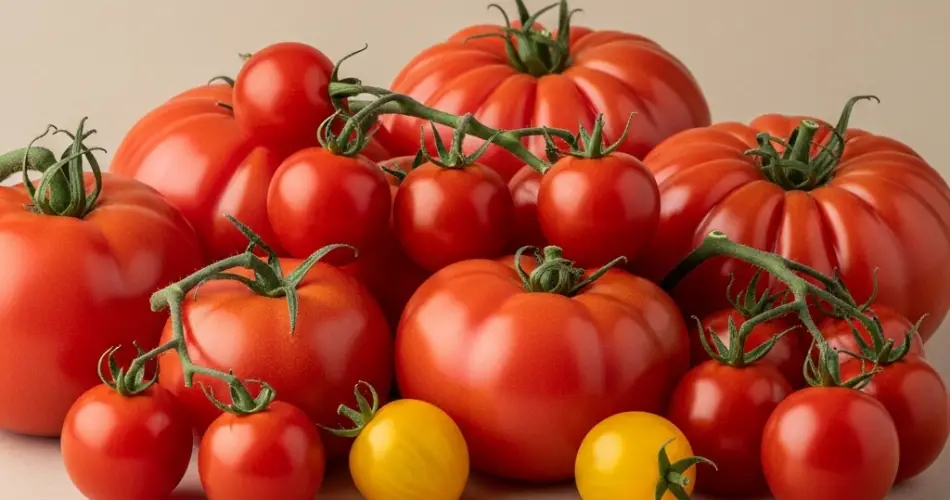Growing your own tomatoes might seem like an intimidating task—especially if you’ve never gardened before. But the truth is, tomatoes are one of the most beginner-friendly plants you can grow, whether in a garden bed, container, or sunny balcony. With a little preparation and guidance, even first-time gardeners can raise healthy, productive tomato plants that yield sweet, flavorful fruit.
Here’s a complete, easy-to-follow guide on how to raise tomatoes from scratch—no green thumb required.
1. Choose the Right Tomato Variety
Not all tomato plants are created equal, and choosing the right variety can make your first gardening experience much easier. For beginners, opt for determinate (bush-type) tomatoes, which grow to a set height and require less maintenance than indeterminate (vining) types.
Some beginner-friendly varieties include:
-
Roma – ideal for cooking and sauces.
-
Celebrity – disease-resistant and productive.
-
Tiny Tim or Patio Princess – compact, perfect for containers.
If you’re planting in a small space or indoors, go with cherry tomatoes like ‘Sweet 100’ or ‘Balcony Red,’ which thrive in pots and need minimal fuss.
2. Start With Seedlings
While growing from seed is rewarding, it’s easier for beginners to start with young plants (seedlings) from a garden center or nursery. They’re already past the fragile sprouting phase and will give you a head start on growth and harvest.
Look for sturdy plants with:
-
Bright green leaves
-
No yellowing or spots
-
A thick central stem (avoid leggy or floppy seedlings)
If starting from seed is your only option, begin indoors 6–8 weeks before your area’s last frost date.
3. Pick the Right Container or Garden Spot
Tomatoes love sun and warmth. Whether growing in the ground or in a pot, choose a spot that gets at least 6–8 hours of direct sunlight per day.
If you’re using containers:
-
Select a pot at least 12 inches deep and wide.
-
Make sure it has drainage holes to prevent soggy roots.
-
Use lightweight, nutrient-rich potting mix instead of garden soil.
For in-ground planting, loosen the soil and enrich it with compost or aged manure to promote strong root development.
4. Planting Made Easy
When transplanting tomato seedlings:
-
Remove the lower leaves, leaving only the top 3–4 sets.
-
Plant the seedling deeply, burying the stem up to the lowest remaining leaves. This encourages more roots to grow along the buried stem, resulting in a stronger plant.
Water well after planting, and space multiple plants 18–24 inches apart to ensure good air circulation.
5. Watering and Feeding for Success
Tomatoes are thirsty, but they dislike soggy soil. To keep your plants healthy:
-
Water deeply 2–3 times per week, depending on weather and soil type.
-
Avoid watering the leaves—water at the base of the plant to prevent disease.
-
Use mulch (like straw or shredded leaves) to retain moisture and reduce weeds.
As your plants grow, feed them with a balanced fertilizer every 2–3 weeks. Look for one labeled specifically for tomatoes, which usually includes extra calcium to prevent blossom end rot.
6. Support Your Plants
Even compact varieties benefit from a little support. Use a tomato cage, stake, or trellis to keep your plants upright as they grow. This not only prevents the fruit from touching the ground but also improves air flow and sun exposure.
Attach the stems loosely with soft ties or twine to avoid damage.
7. Watch for Common Problems
Tomatoes are hardy, but like all plants, they can run into issues. Here’s what to look out for:
-
Yellow leaves: often a sign of overwatering or nutrient deficiency.
-
Curled leaves: may result from heat stress or pests.
-
Blossom end rot: a dark spot at the bottom of fruit caused by calcium imbalance.
Check your plants regularly and remove any discolored or diseased leaves. If pests like aphids or caterpillars appear, use natural methods like neem oil or simply rinse them off with water.
8. Harvesting the Fruits of Your Labor
Tomatoes are ready to harvest when they’re fully colored and slightly firm to the touch. Gently twist the fruit off the vine or snip it with scissors.
For the best flavor, let them ripen on the plant. However, if frost is approaching or pests are an issue, you can harvest slightly underripe tomatoes and let them finish ripening indoors.
Final Thoughts
You don’t need a large garden, expensive tools, or years of experience to grow delicious tomatoes. With a sunny spot, the right variety, and a little care, you’ll be amazed at how quickly your efforts pay off.
Raising tomatoes is not only doable for beginners—it’s a rewarding introduction to the world of gardening. So grab a pot, a plant, and a watering can, and enjoy the journey from seedling to harvest.



